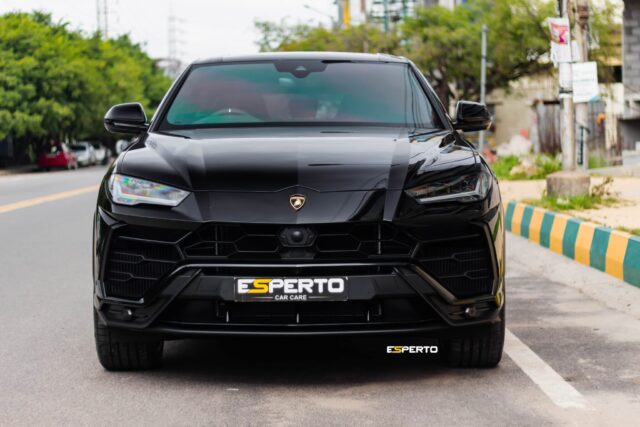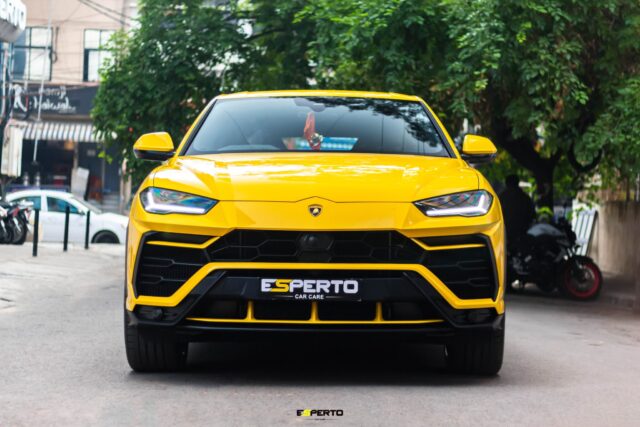Applying a ceramic coating to a new car is an essential step in preserving its exterior. This advanced protective layer forms a strong, semi-permanent barrier against environmental contaminants and UV damage. By enhancing the vehicle’s aesthetic appeal and simplifying maintenance, long-lasting ceramic protection for vehicles offers unparalleled defense compared to traditional methods. Its hydrophobic properties guarantee that water and dirt slide off effortlessly, maintaining the car’s showroom shine. Explore why this investment is vital for long-term vehicle care.
Key Takeaways
- Ceramic coating offers superior protection against UV rays, preventing paint fading and oxidation.
- It creates a hydrophobic layer that repels water and dirt, reducing maintenance frequency.
- Enhanced gloss and depth provide a lasting showroom finish to the car’s surface.
- Its durability surpasses traditional waxes, ensuring long-term aesthetic appeal and protection.
- Professional application of ceramic coating includes warranties, offering assurance of quality and longevity.
What Are the Benefits of Ceramic Coating for New Cars?
Ceramic coating serves as a protective layer that enhances the durability of a new car’s paint by providing resistance against environmental contaminants such as UV rays, dirt, and chemicals.
It is particularly beneficial for new cars because it maintains the vehicle’s aesthetic appeal while reducing the frequency of maintenance.
Although ceramic coating provides significant protection, it is not a substitute for paint protection film, which offers superior defense against physical damage like rock chips.
How Does Ceramic Coating Protect the Car’s Paint
Although various options exist for car paint protection, ceramic coating stands out due to its ability to create a semi-permanent shield against environmental contaminants.
Applying a ceramic coat to a new car enhances the paint protection by forming a hydrophobic layer that repels water and dirt. This barrier not only preserves it, but also enhances the vehicle’s appearance while extending the paint’s durability.
Ceramic coating offers benefits such as protection against UV rays, oxidation, and chemical stains, which can degrade the clear coat over time.
Car owners find that ceramic coating on new cars considerably reduces maintenance efforts, as the coating provides a slick surface that minimizes the adhesion of contaminants. Consequently, the car’s paint remains in pristine condition for an extended period.
Why Is Ceramic Coating Considered Good for New Cars
Newly manufactured vehicles can greatly benefit from the application of a ceramic coating, a protective solution that enhances the durability and longevity of automotive paint.
New car ceramic coating serves as a robust barrier against environmental contaminants, preserving the factory paint from damage. When a professional ceramic coating is applied, it provides superior car paint protection compared to other methods.
This coating applied to the vehicle’s surface creates a hydrophobic layer, which repels water and reduces oxidation, ultimately ensuring that the paint remains pristine.
Unlike paint protection film, ceramic coating for new cars offers a glossy finish that enhances visual appeal.
Considering the long-term benefits, this makes ceramic coating worth the investment to keep your car looking new and well-maintained.
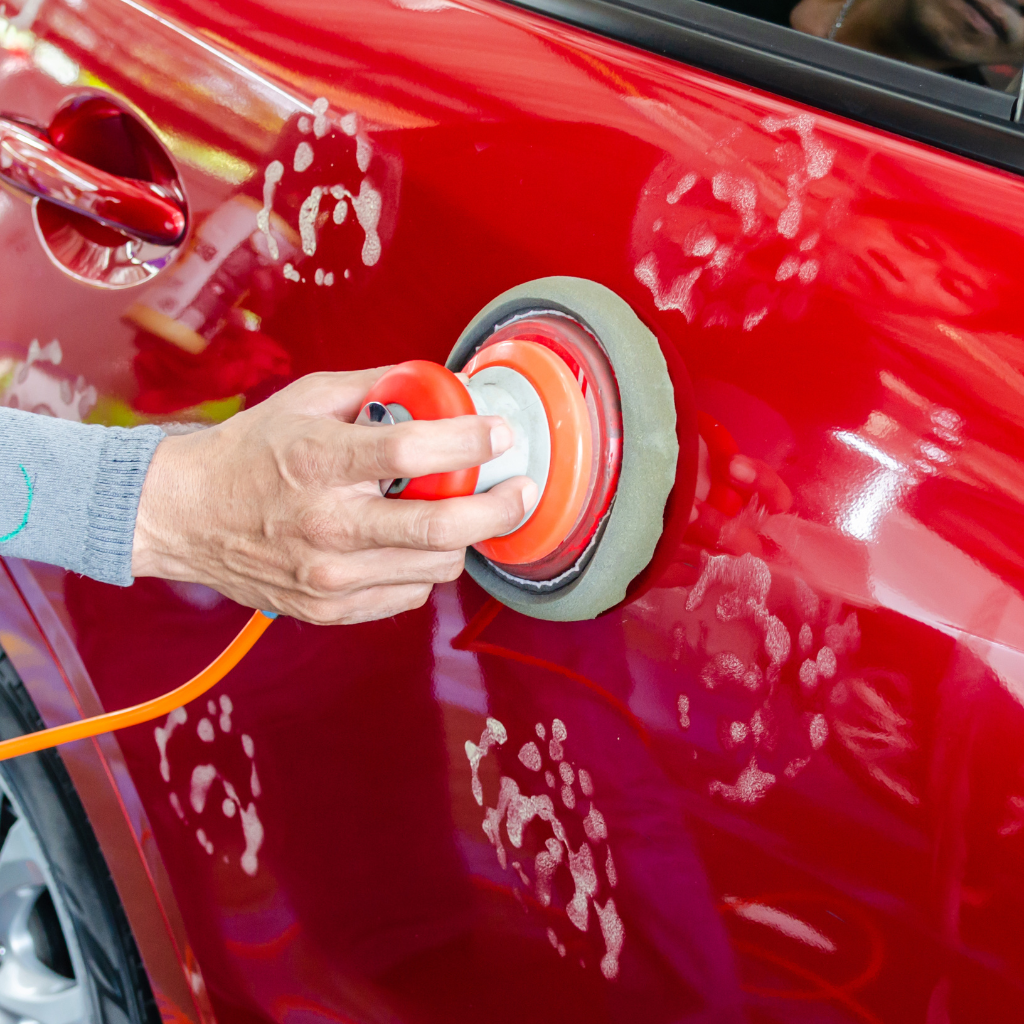
Can Ceramic Coating Replace Paint Protection Film
When considering the merits of ceramic coating versus paint protection film (PPF), it is essential to assess their distinct functionalities and advantages.
Ceramic coating for cars provides a chemical layer that bonds with car paint, offering hydrophobic properties and UV protection. It enhances gloss and makes maintenance easier.
However, ceramic coating on a new car does not offer the same degree of physical impact protection as PPF. Paint protection film is a thicker, transparent layer that effectively guards against scratches and chips.
While applying a ceramic coating is worth it for new cars seeking enhanced aesthetics and surface protection, it cannot replace PPF’s defensive capabilities. Consequently, having a car ceramic coated is a valuable complement, but not a substitute for PPF.
How Long Does a Ceramic Coating Last on a New Car?
Various factors, including environmental conditions, quality of the coating product, and maintenance practices, influence the longevity of a ceramic coating on a new car.
High-quality ceramic coatings can last anywhere from two to five years under ideal conditions, but regular maintenance is essential for extending this lifespan.
Reapplication frequency generally depends on the specific product used and the level of exposure to harsh elements, with most manufacturers recommending a refresh every one to three years.
What Factors Affect the Durability of Ceramic Coatings
Although ceramic coatings are renowned for their protective qualities, their durability on a new car depends on several vital factors.
The longevity of a ceramic coating product hinges on the following elements:
- Quality of Product: A professional-grade ceramic coating makes a significant difference. High-quality ceramic coating products tend to last longer as they provide superior protection and bonding.
- Application Technique: Proper coating application is essential. Ensuring the ceramic coating is applied meticulously, often involving paint correction or prep work, affects durability.
- Maintenance Practices: How a new vehicle is maintained post-application influences the longevity of the coating. Regular cleaning and avoiding harsh chemicals can extend its life.
The cost of ceramic coating may reflect these factors, impacting overall performance and longevity.
How Often Should the Coating Be Reapplied
Understanding the factors affecting the durability of ceramic coatings provides insight into their longevity.
A ceramic coating on a new car typically lasts between two and five years, depending on the quality of the ceramic coating application and environmental conditions. This coating is a liquid polymer that forms a protective layer over the vehicle’s paint. Many car owners opt to apply ceramic coatings due to their durability and enhanced protection.
However, the ceramic coating requires periodic maintenance to retain its effectiveness. A professional ceramic coating service may recommend reapplication after paint correction or if significant degradation is observed. Routine inspections can help determine when a new layer is necessary. Ultimately, the specific needs of each vehicle dictate how often reapplication is needed.
Is Ceramic Coating Worth It for New Cars?
Evaluating the worth of ceramic coating for new cars requires an analysis of its potential to enhance vehicle resale value, its cost-effectiveness, and the opinions of car enthusiasts.
Ceramic coatings can provide a glossy finish that protects against environmental damage, potentially increasing the appeal and market value of a vehicle.
However, the initial investment may seem substantial, leading to varied opinions among car enthusiasts regarding its overall benefit for new vehicles.
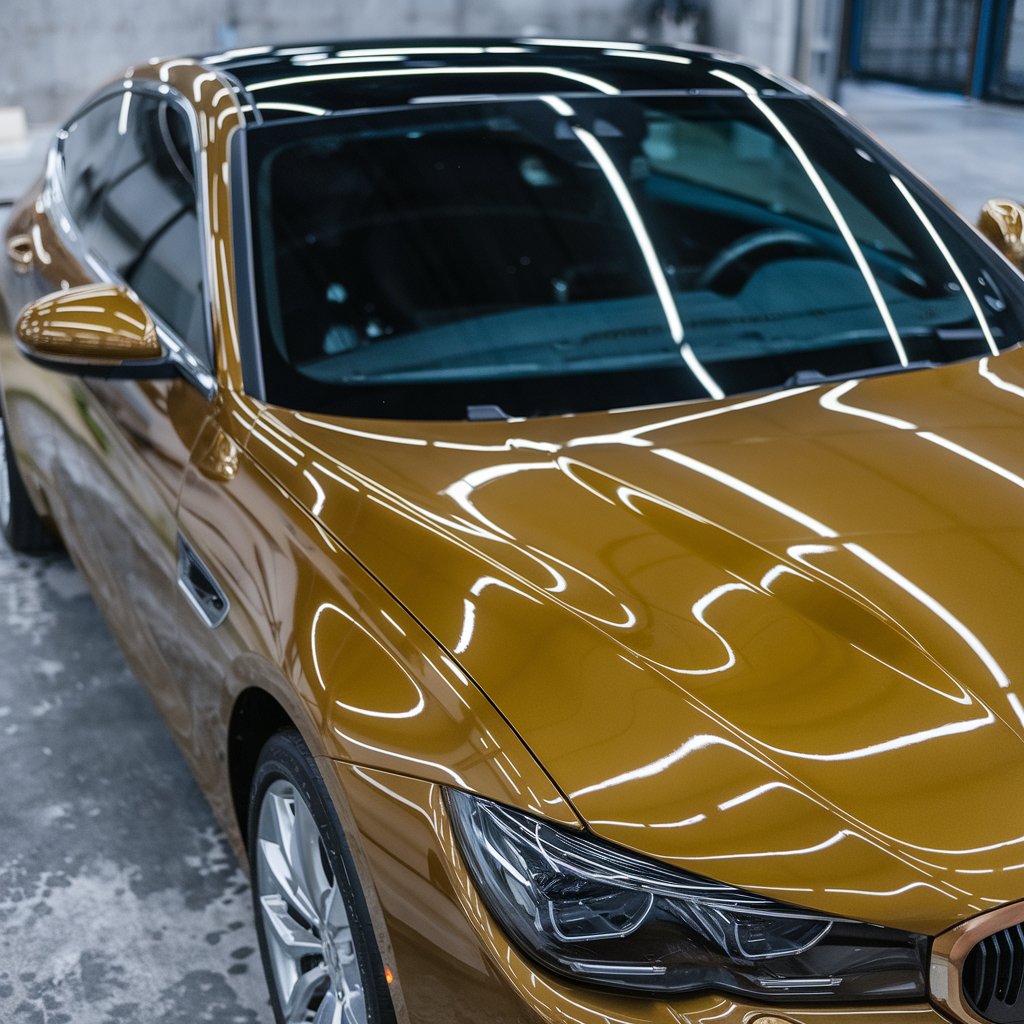
How Does Ceramic Coating Enhance the Resale Value of a Car
Ceramic coating can greatly enhance a car’s resale value by offering robust protection against environmental contaminants and minor scratches, which are common concerns for potential buyers.
Applying ceramic coating on your car guarantees the vehicle’s exterior remains pristine, which appeals to car enthusiasts seeking a ceramic-coated car that keeps it looking brand new.
This lasting car protection does not void warranties, so a new car will not void its manufacturer’s guarantees when you apply the coating.
- Durability: The coating creates a tough barrier, reducing wear and tear, which maintains the car’s appearance over time.
- Low Maintenance: A ceramic-coated car requires less frequent cleaning, saving future owners time and effort.
- Enhanced Aesthetics: Different ceramic coating product types enhance gloss and color depth, making the vehicle more visually appealing.
Does Ceramic Coating Justify the Cost for New Vehicles
When considering whether ceramic coating justifies the cost for new vehicles, one must assess its long-term benefits against its initial expense.
Applying ceramic coating to a new car involves utilizing a liquid polymer that bonds with the vehicle’s paint, offering protection from environmental contaminants.
Installation on your new car can be costly, but the reduced need for paint correction or prep can offset the investment.
What Do Car Enthusiasts Say About Ceramic Coatings
While opinions among car enthusiasts vary regarding ceramic coatings for new vehicles, there is a consensus on several key points.
- Enhanced Durability: Ceramic coatings are praised for providing superior car protection against environmental factors compared to traditional waxes.
- Aesthetic Appeal: Enthusiasts agree that the best ceramic coatings greatly enhance the gloss and depth of a new car’s paint, offering a showroom finish that is hard to replicate with conventional methods.
- Ease of Maintenance: For both professional applications and DIY ceramic coating options, the reduced need for frequent washing and the added benefit of ceramic spray coating contribute to a low-maintenance solution favored by the average car enthusiast.
How Does Ceramic Coating Compare to Other Protective Methods?
Ceramic coating distinguishes itself from traditional clear coats by offering enhanced durability and resistance to environmental contaminants.
When compared to wax and sealants, ceramic coating provides longer-lasting protection and superior hydrophobic properties.
However, potential drawbacks include its higher cost and the need for professional application to achieve ideal results.
What Makes Ceramic Coating Different from Clear Coats
How exactly does ceramic coating distinguish itself from traditional clear coats and other protective methods? Ceramic coating, an advanced liquid polymer, offers enhanced protection for new cars by bonding chemically with the vehicle’s paint, unlike clear coats that merely sit atop the surface. This chemical bond provides a durable and resilient shield against environmental contaminants. Key differences include:
- Durability: Ceramic coatings greatly outlast clear coats due to their superior hardness, providing long-term protection against scratches and oxidation.
- Hydrophobic Properties: The ceramic coat imparts a hydrophobic layer, causing water and dirt to slide off effortlessly, unlike clear coats, which do not repel water effectively.
- UV Resistance: Ceramic coatings offer advanced UV protection, preventing paint fading and oxidation, which are common issues with traditional clear coats.
Is Ceramic Coating Better Than Wax and Sealants
When evaluating the effectiveness of ceramic coatings compared to wax and sealants, one must consider the unique properties and longevity of each option.
Ceramic coating is a liquid polymer that creates a lasting bond with the vehicle’s paint, delivering enhanced protection from environmental contaminants. Unlike wax and sealants, car ceramic coating provides a durable, ultra-concentrated quartz coating that uses advanced technology to enhance longevity and gloss.
Many car owners don’t factor in the long-term benefits when deciding, but ceramic coating is the right choice for lasting protection. While the initial cost of applying a ceramic coating may seem high, the benefits offered by ceramic coating, outweigh those of traditional wax and sealants.
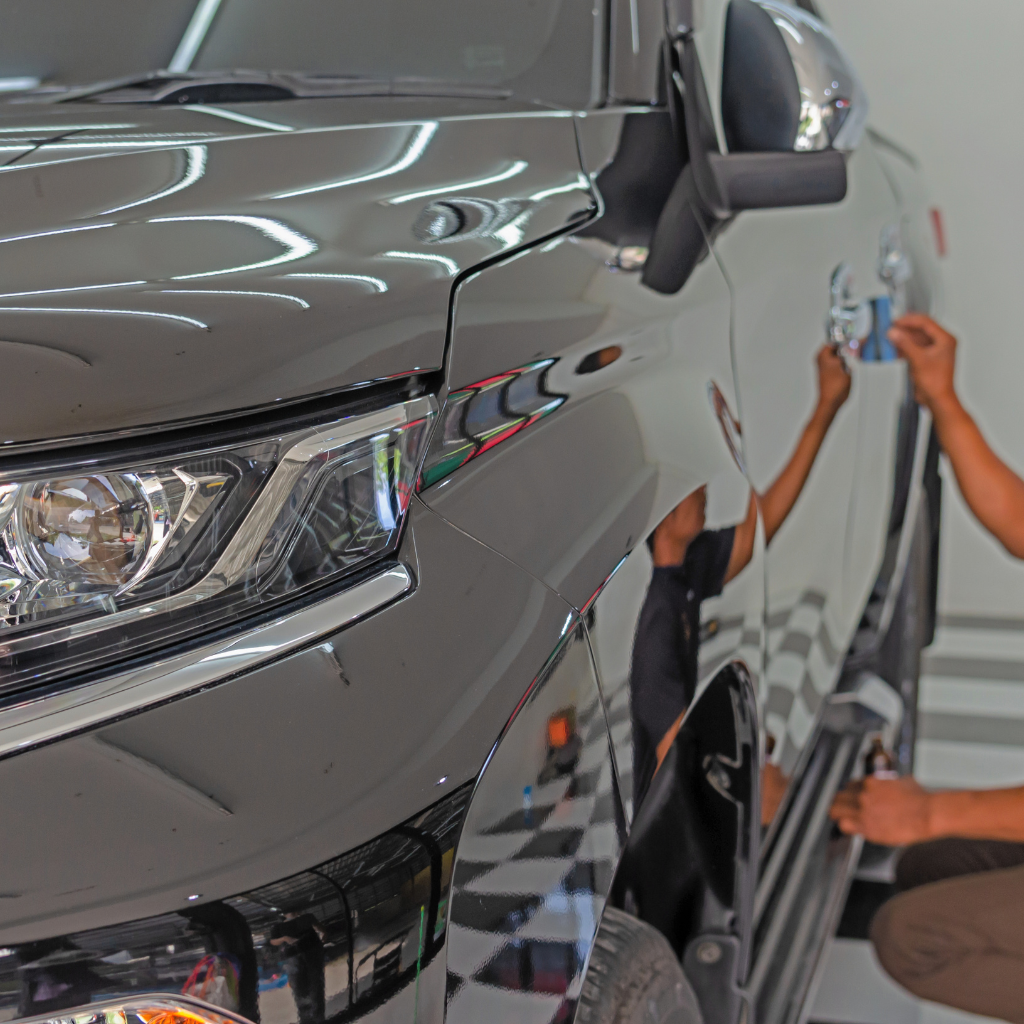
What Are the Drawbacks of Ceramic Coating
Significantly, while ceramic coating offers impressive durability and protection for automotive surfaces, it is not without its drawbacks.
- Application Complexity: Applying ceramic coating to your new vehicle demands precision and expertise, making it challenging for the average car enthusiast to apply effectively.
- Cost: Different types of ceramic coatings can be expensive, especially the best ceramic options.
- Limited Self-Healing Properties: Even with nano and ceramic coating, when the car is exposed to deep scratches or severe abrasions, the coating may not self-heal effectively.
This reduces its long-term efficacy in making the car look pristine.
Is Ceramic Coating a Viable Option for Car Owners?
When considering ceramic coating as a protective option for cars, understanding the application process is essential, as it involves meticulous surface preparation and layering to guarantee ideal results.
Consumers can choose from a variety of DIY ceramic coating products, which offer varying levels of ease and effectiveness, yet may lack the precision and thoroughness of a professional application.
Comparing these methods, professional services often provide superior longevity and finish due to their specialized tools and expertise.
How Do You Apply a Ceramic Coating Step by Step?
Applying a ceramic coating involves a meticulous process that guarantees excellent protection and longevity for a vehicle’s exterior. This process is vital for both car and bike owners who plan to keep their vehicles in pristine condition.
To complete a ceramic coating effectively, it is important to follow these steps:
- Thorough Car Wash: Use a high-quality car shampoo to remove dirt and contaminants. This step guarantees the surface is clean when applying ceramic wax and makes it easier for the average car owner.
- Surface Preparation: Clay bar treatment is essential for removing embedded impurities and creating a smooth finish.
- Application of Ceramic Coating: Carefully apply the ceramic coating in small sections, guaranteeing even coverage and curing time to achieve the best results.
How Does Professional Application Compare to DIY Methods
Professional application offers precision, expertise, and quality that may not be achievable with DIY methods. Here are key comparisons:
- Expertise and Skill: Professionals are trained in surface preparation and application techniques, ensuring ideal adherence and finish.
- Equipment and Materials: Professionals use specialized tools and high-grade ceramic products that outperform consumer-grade kits.
- Warranty and Assurance: Professional services often come with warranties, providing peace of mind regarding the coating’s durability.
Conclusion
In conclusion, ceramic coating offers an advanced protective solution for new cars by forming a robust, semi-permanent barrier against environmental damage, UV rays, and chemical stains. Its hydrophobic properties simplify maintenance, ensuring the vehicle’s exterior remains in excellent condition. Compared to traditional methods, ceramic coating provides superior longevity and ease of upkeep. For car owners seeking to preserve their investment and maintain aesthetic appeal, ceramic coating proves to be a worthwhile and effective option for long-term protection.



